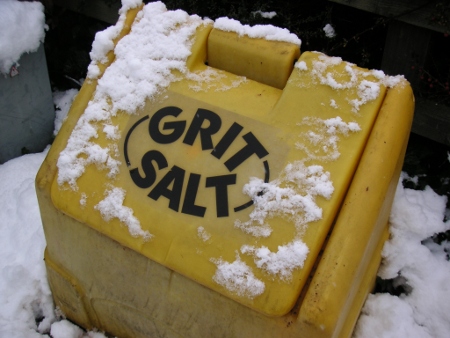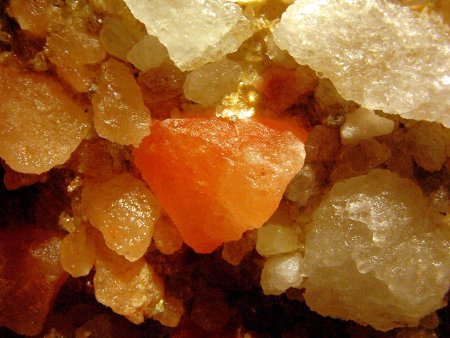Almost every day I walk past this yellow grit container. I’ve never really paid attention to it before, but it’s certainly in the news at the moment.

Why do we grit roads?
The term “grit” is a bit of a misnomer and an ambiguous term. The “grit” used on roads is actually rock salt, known properly as halite.

Halite is the mineral form of sodium chloride, the same salt that’s used to season food. Most of the UK’s halite comes from Winsford Rock Salt Mine in Cheshire in the North West. You can see the yellow gritting vehicles at the bottom of the map below.
Gritting roads is all about melting points. Water begins to freeze below 4°C, so if the ambient temperature is anywhere below 4°C any water on the roads will turn to ice, which is very slippery and cannot be pushed away by tyre tread.
Spreading salt on the roads causes it to mix with the water to produce brine. The saltier the brine, the lower the melting point. For example: a mixture of 30g of salt per 1000g of water lowers the melting point to −1.6°C. Now imagine the ambient temperature is 0°C: any pure water on the road will freeze but the salty water will remain a liquid.
Unfortunately there is a limit to salt’s usefulness. To make the melting point as low as possible you must add as much salt as possible and supplies are limited. Even a completely saturated solution, a totally impractical measure using a huge amount of salt (23.3% salt by weight) only has a melting point of −21.1°C, making the use of rock salt pointless below this temperature. Realistically it would be impractical and very difficult for councils to use rock salt to cope with temperatures much below −10°C.
Please can you e-mail me about the use of your salt/grit photo.
Many thanks
I’ve e-mailed you.
Which is why in Sweden our grit bins (labelled sand) don’t contain halite, they have small gravel. Too cold for halite to work. I’m yet to work out why it is labelled sand when it is clearly larger than sand sized (but maybe non-geologists aren’t that concerned about grain size).
very helpful
What is the point of grit in rock salt
Extra grip, I would imagine.
Thanks, ypou really helped on my homework
can you send me the email for information in easy words
Sorry, Tegh, I don’t understand your question.
do you have a list of sources that you used?
No.